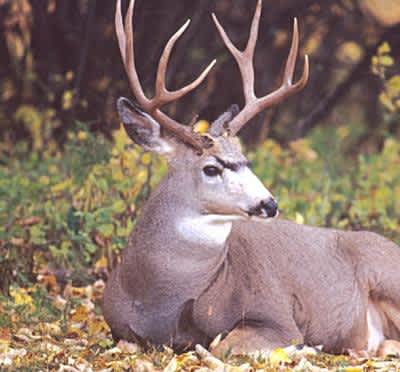How To Hunt Mule Deer, Five Must Follow Mule Deer Hunting Tips
Mike O'Reilly 05.11.11

1. Focus on a single buck or group of bucks.
Most of these mule deer hunting tips focus on the early season at high altitude, but can also apply throughout the season. My primary piece of advice is to pursue a buck or small group of bucks you’ve found during your mid-summer scouting sessions, and stick with them as long as it takes you to “stick” one. These bucks will maintain fairly consistent eating, travel, and bedding patterns well into late September or mid-October, depending on weather and food supply. Assuming you don’t kill one opening morning, you’ll get a chance to really understand where they’re going and why whenever you see them. The information you learn should allow you to position yourself a little better each time you go out.
2. Scout a primary location and a backup location.
You might swear that the best mule deer hunting odds are on the mountain you’ve been scouting all Summer, but circumstances sometimes arise that prevent you from hunting there during your available time slot. One year, the day before the archery opener a forest fire was eating up the hillside I had planned on hunting, so I had to choose a backup location. Although I didn’t make a kill, I was able to find good bucks in the other spot because I’d scouted it earlier that Summer.
3. Understand travel corridors.
It’s happened to all of us: you see a buck walking down a trail just out of range from where you’ve set up your stand, so the next day you set your stand over near that trail, only to see the same buck come down the trail you were standing on the day before. Obviously deer don’t follow a playbook, and the big ones get that way by being a little smarter than the others, but there are things you can do to maximize your opportunities when hunting corridors. Feeding areas can be large, and more difficult to figure out than bedding areas, which are a little more obvious because beds are easy to recognize. For this reason, I try to hunt close to bedding areas in the morning and wait for deer to show up after a night of feeding. The closer you can get to the bedding area, with the wind in your favor, the more likely you are to intercept a deer as he moves in.
Hunting corridors near a bedding area in the afternoon can be a little riskier, because if the deer are present when you show up, they will have longer to scrutinize your scent, should the fickle mountain breezes start to swirl as they often do. Also, even if the wind is in your favor it can be hard to predict which trail a deer will take on his way out of a bedding area. Remember, if you’re there when he shows up, you might be able to do some sneaking after he lays down, but it’s almost impossible to re-position yourself when a deer is walking by you.
4. Hunting pressure: Don’t believe the hype!
The term “hunting pressure” is constantly thrown around because it serves as a convenient catch-all excuse for why a hunter didn’t get his buck, while making that hunter seem like he really understands his local terrain and wildlife. Although it’s counterintuitive, I believe that big bucks actually get big because of their utter confidence in their bedding locations. And, it’s this confidence that makes them return to their favorite haunts, even after being jumped from the same bed day-after-day. “That’s impossible!” you say, but you will become a believe when you are the guy who jumps that buck out the same bed three, four, even five days in-a-row.
5. Late season: Be flexible.
No one is more full of mule deer hunting tips than the guy who hunts during the rut. But not me. The best tip I can give for that time of year is: don’t follow any tips, and be flexible, because anything can happen. Bucks might be together, or they might not. They might be chasing does, or they might not, but one thing is for sure: they won’t be doing the same thing in May as they will be doing in August. They might use the same feeding and bedding areas they used to, but they won’t lay down for as long, and they won’t eat as much. You’ll be tempted to get aggressive with rattling or grunt calls, but before you go crashing those tines together, you’d better have a good understanding of the buck-to-doe population in your area. Because if the bucks aren’t ready to fight, you might as well be pulling a foghorn out of your pack. Heck, I haven’t tried that; it might actually work!

